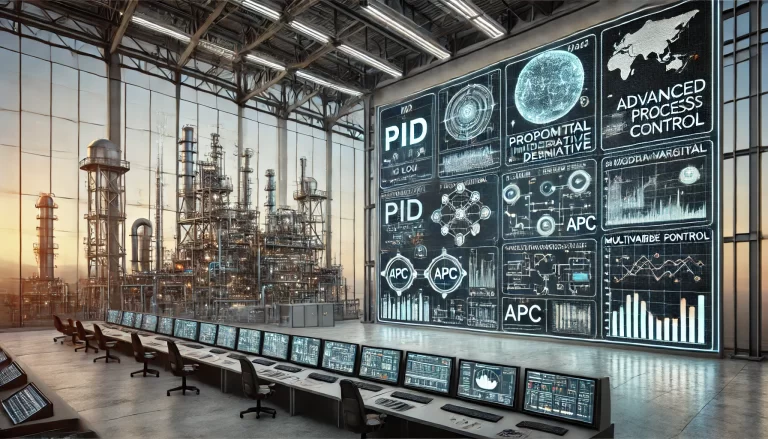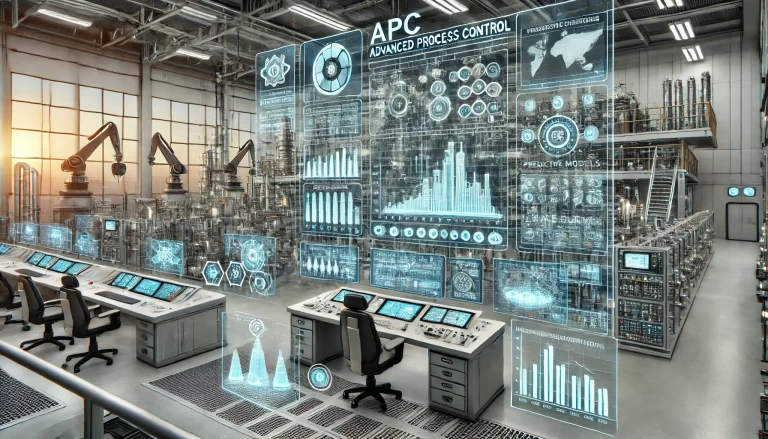In the operation of a distillation column, temperature control plays a critical role in ensuring the separation and purity of the product. The original temperature control scheme, designed to use reflux control to regulate the top of the column temperature, has proven to be inadequate under certain operating conditions. Experience has shown that when the top temperature is controlled, the temperature of the sensitive plate (a key component in the column) must not be too low. A low temperature on the sensitive plate can lead to excessive light components in the bottom of the column, which compromises the distillation efficiency downstream. When the sensitive plate temperature falls below the acceptable level, operators must manually adjust the top temperature setpoint. This dependence on operator intervention indicates that the original control scheme has significant room for improvement.
Issues with the Original Control Scheme
The original control method using top temperature to control the reflux was suitable under standard conditions, but it fails to account for fluctuations that may arise in more complex or changing process conditions. The most critical issue is that the sensitive plate temperature does not always correlate with the column’s top temperature, leading to situations where the column’s separation performance is suboptimal. To address this, the control strategy must be revised to more precisely manage both the top temperature and the sensitive plate temperature, reducing the need for manual operator intervention.

Proposed Control Scheme Modifications
Option 1: Sensitive Plate Temperature Control
In cases where the top temperature no longer accurately reflects the product quality, controlling the sensitive plate temperature directly becomes a viable alternative. This approach can provide a more stable and responsive control loop, as it directly addresses the conditions that affect product quality. However, this control loop will require a new temperature measurement point on the sensitive plate, adding a layer of complexity to the system.
Option 2: Combined Control of Top Temperature and Sensitive Plate
An advanced modification involves combining both the top temperature control and sensitive plate temperature control into a single system. If the sensitive plate temperature is within the acceptable range, top temperature control can continue to operate. However, if the sensitive plate temperature exceeds the limits, a “deviation control” algorithm can adjust the reflux based on both temperature readings, ensuring a more responsive and flexible control system. This option is more complex but offers greater flexibility and can handle varying operational conditions more effectively.
Both control schemes require offline installation and testing, with Option 2 being more complex due to the need for an additional control loop and a deviation selection module, which has never been used in the facility before.
Advanced Control: Multi-Variable Coordinated Control
In complex processes, advanced process control (APC) systems can significantly outperform traditional Distributed Control Systems (DCS). By using APC, the distillation column can be controlled using multiple variables, such as both the top temperature and sensitive plate temperature, with the reflux rate as the manipulated variable. The key advantages of APC include:
- Multi-Variable Coordination: APC can manage up to 10-20 process variables simultaneously, ensuring more precise control in a complex system.
- Dynamic Constraint Management: APC can handle changing process constraints in real-time, making it highly adaptable to variations in feedstock, operational conditions, and product quality requirements.
- Flexibility in Control Structure: The control structure can be adjusted online, allowing operators to optimize the system as conditions change.
- Control Strategy Testing: APC systems provide a platform to test unrefined or experimental control strategies, allowing for gradual implementation and performance evaluation.
- Disturbance Rejection: Built-in feedforward compensation and disturbance suppression mechanisms help maintain control even in the presence of unforeseen disturbances.

When to Implement Advanced Control
While DCS-based control is sufficient for many applications, advanced control should be considered under the following conditions:
- Significant Process Uncertainty: If the distillation process is subject to significant variability, advanced control can improve stability and performance.
- Dynamic Constraints: When the process constraints (e.g., temperature, pressure, flow rate) change dynamically, APC can more effectively manage these changes.
- Multi-Degree of Freedom Coordination: If the process involves multiple interacting variables that need to be controlled simultaneously, APC can optimize the interactions between these variables.
- Control Strategy Testing: In cases where new or evolving control strategies need to be tested, APC provides a platform for trial runs and adjustments.
Advanced Control Variables and Principles
In APC, all available control means (manipulated variables) should be included in the control system, and key quality parameters (controlled variables) must be prioritized. The basic principles of advanced control system design include:
- Manipulated Variables: These should include all available adjustable parameters such as reflux rate, heat input, etc.
- Controlled Variables: These should cover all critical quality parameters that directly affect the desired product specification.
- Simplification of Base Control Layers: While advanced control layers are designed to handle complex interactions, it is important to maintain a simplified base control layer to avoid redundancy and to ensure stability.
- Effective Variable Utilization: The effective use of control variables is essential in handling uncertainty. Not all variables need to be actively used at all times; instead, they can be selected based on current operating conditions.

Conclusion
The proposed optimization of the distillation column’s temperature control scheme through the integration of sensitive plate temperature control and advanced process control techniques can significantly enhance the system’s performance. By utilizing multi-variable coordination and real-time dynamic constraint management, advanced control systems offer superior flexibility, adaptability, and disturbance rejection compared to traditional control methods. Implementing APC will not only improve operational efficiency but also reduce the reliance on manual intervention, leading to more consistent product quality and a more robust distillation process.
